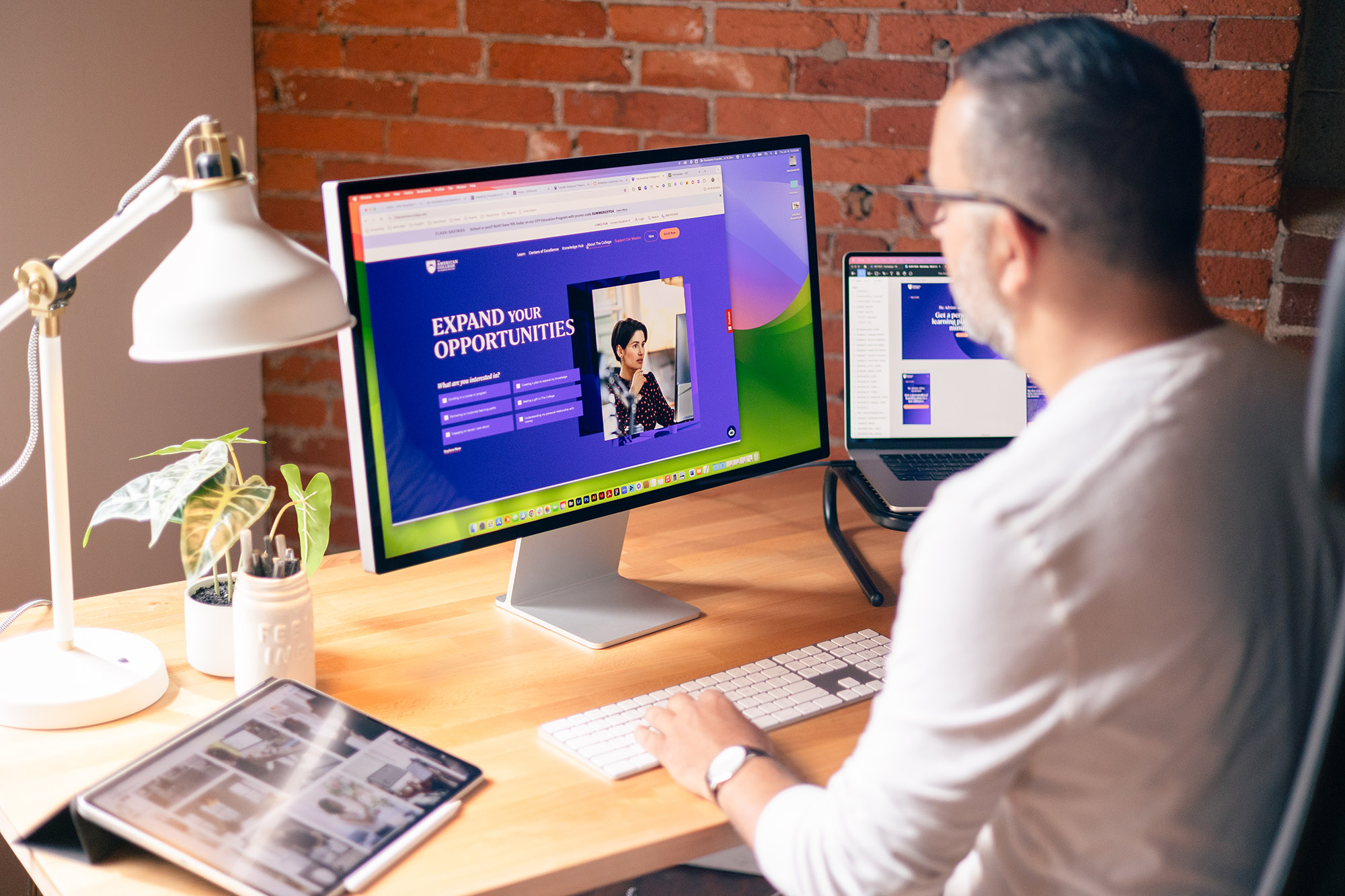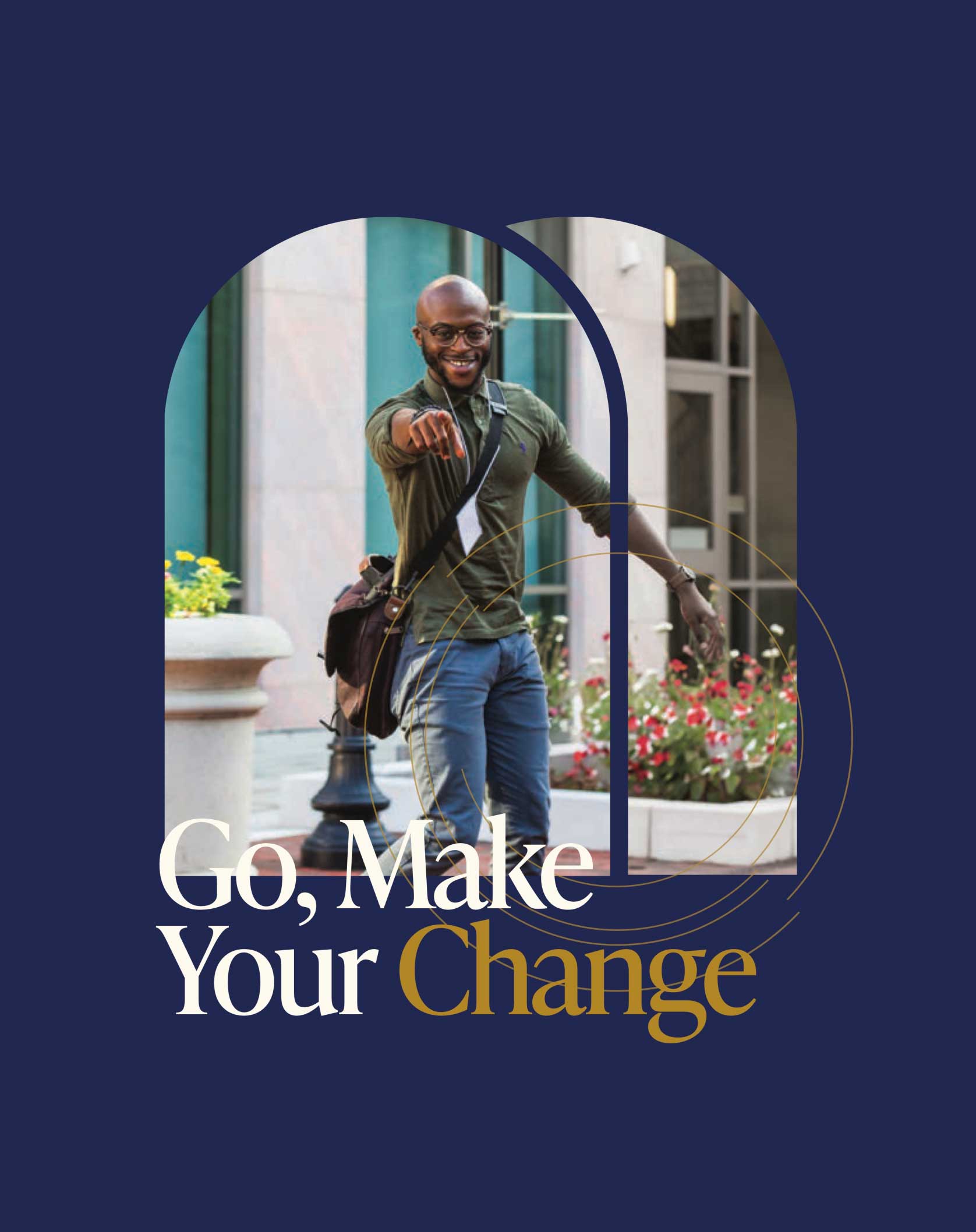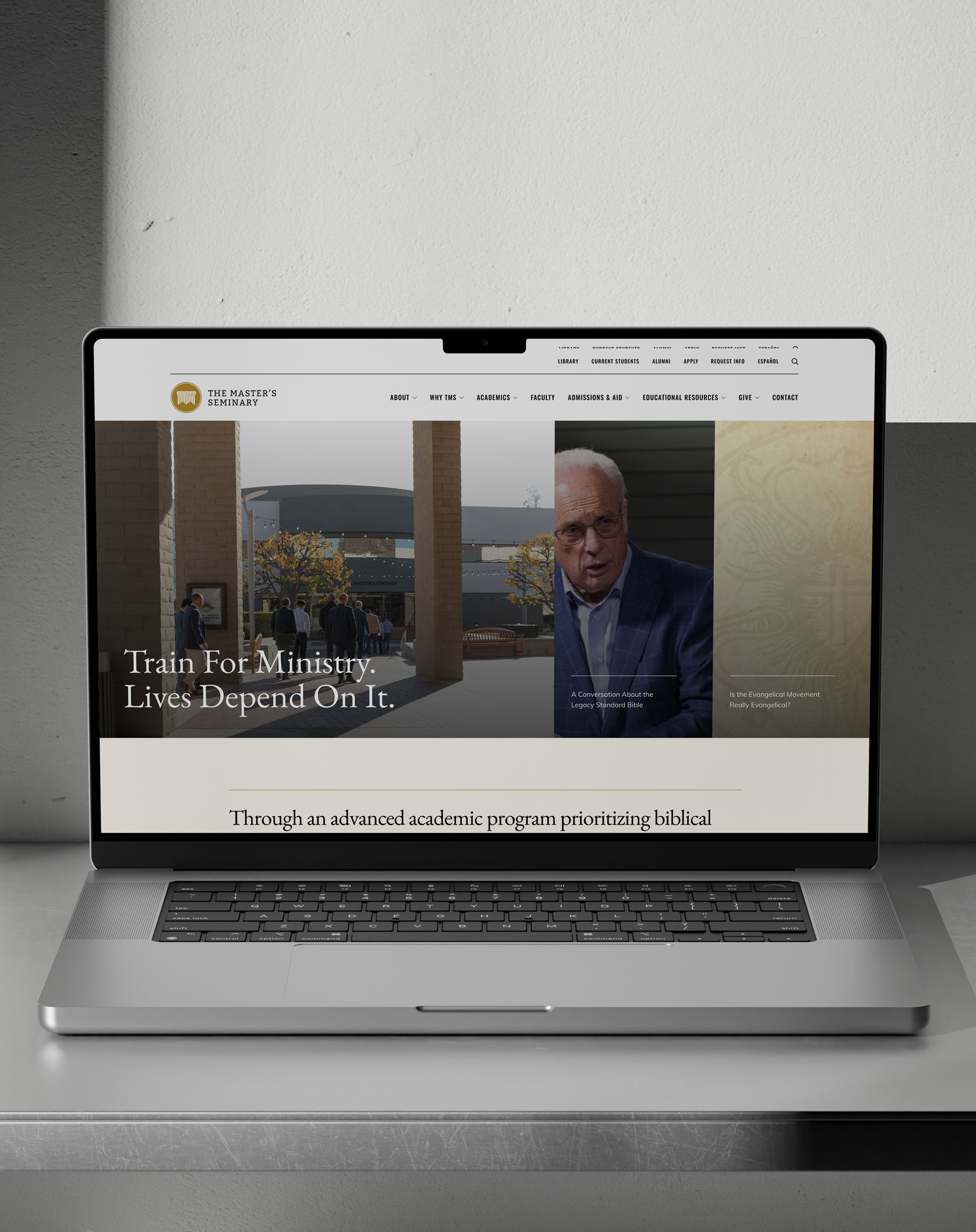01
Research & Strategy
We began with an exhaustive research project designed to delve into every dimension of The College’s brand and website. We facilitated workshops and interviews. We synthesized insights from enrollment reports and brand recognition surveys. We reviewed user behavior trends from Hotjar and Google Analytics. Ultimately, we compiled our comprehensive findings into a strategic roadmap for the journey ahead.
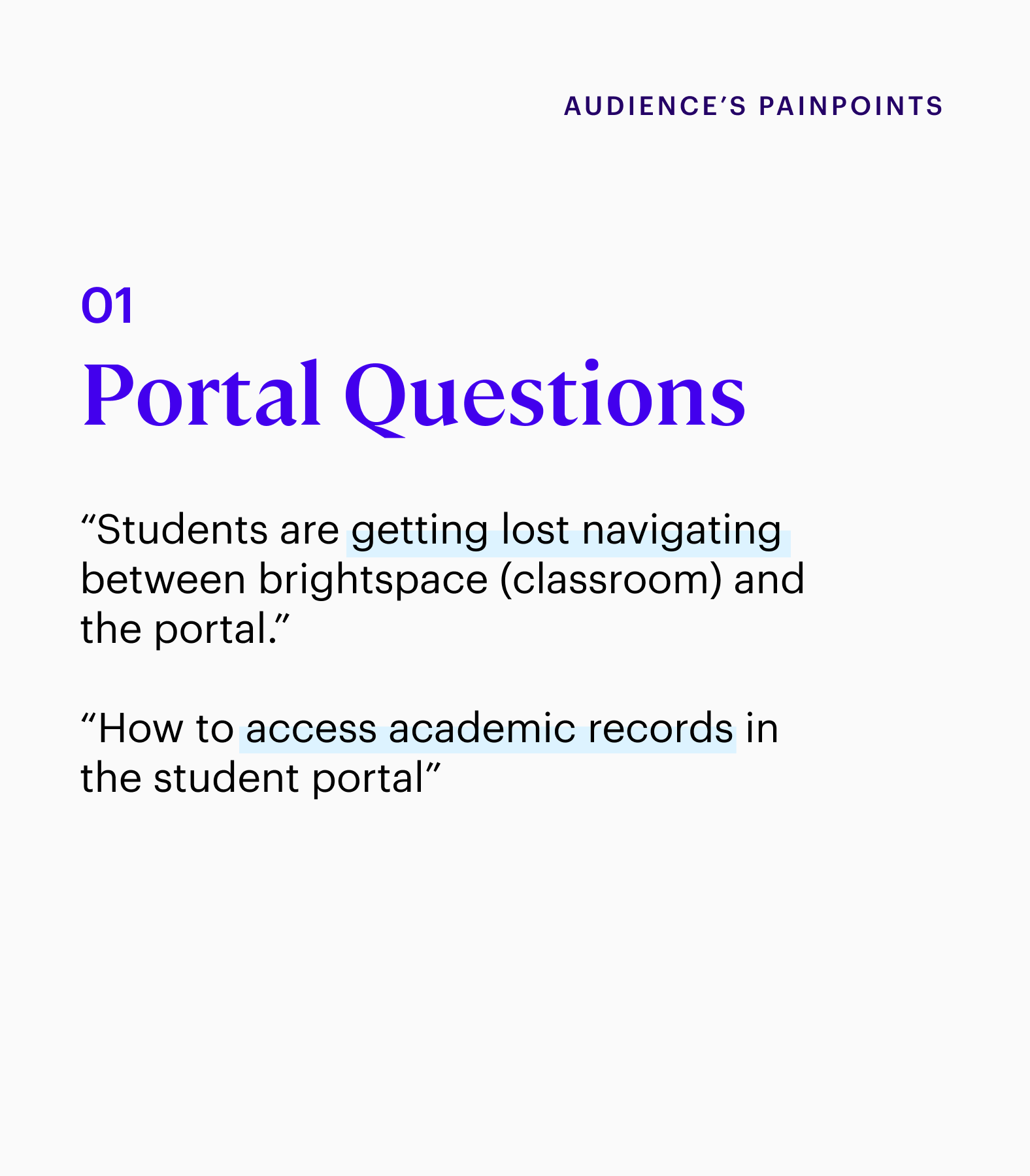
Uncovering Audience Pain Points
Our interviews and surveys revealed six broad categories of target audience pain points. These insights guided our user journeys and the resulting content strategy for the new site.

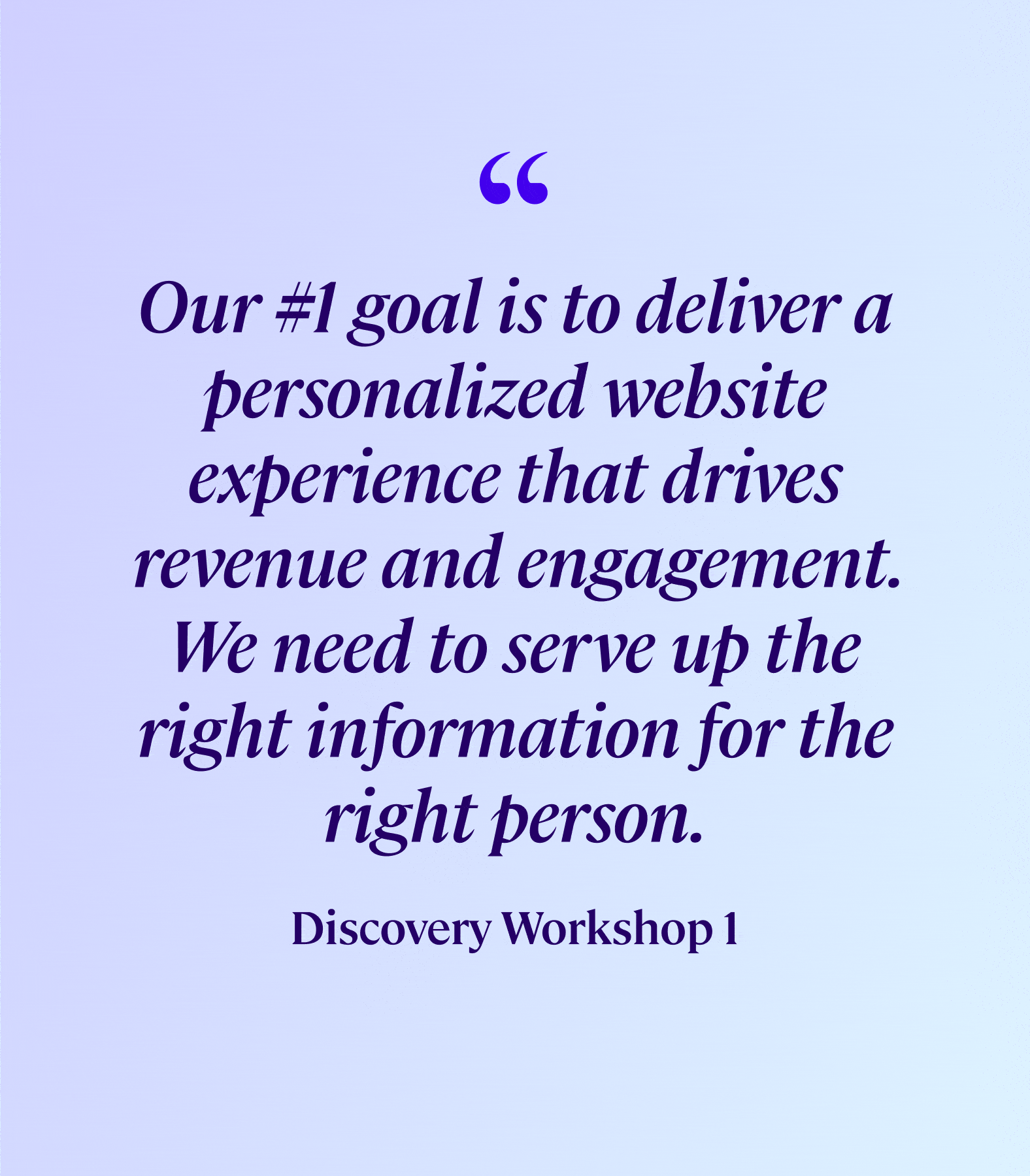
Personalizing the Experience
From the outset, the team at The College was interested in increasing user engagement by building a personalized website experience for each visitor. Based on our research, we recommended four main personalization features: a quiz-style tool to help visitors plot their learning journey, a self-select homepage experience, a robust filterable resources library, and an advanced sitewide search.

Streamlining the Tech Stack
With a fast approaching Drupal 7 end-of-life date, we helped The College team craft a plan to move to the latest Drupal version and stabilize custom modules for Enrollment and Portal functions. We also conducted a comprehensive technical audit and helped prioritize the right marketing tools for the new site alongside our partners at Engine Room.
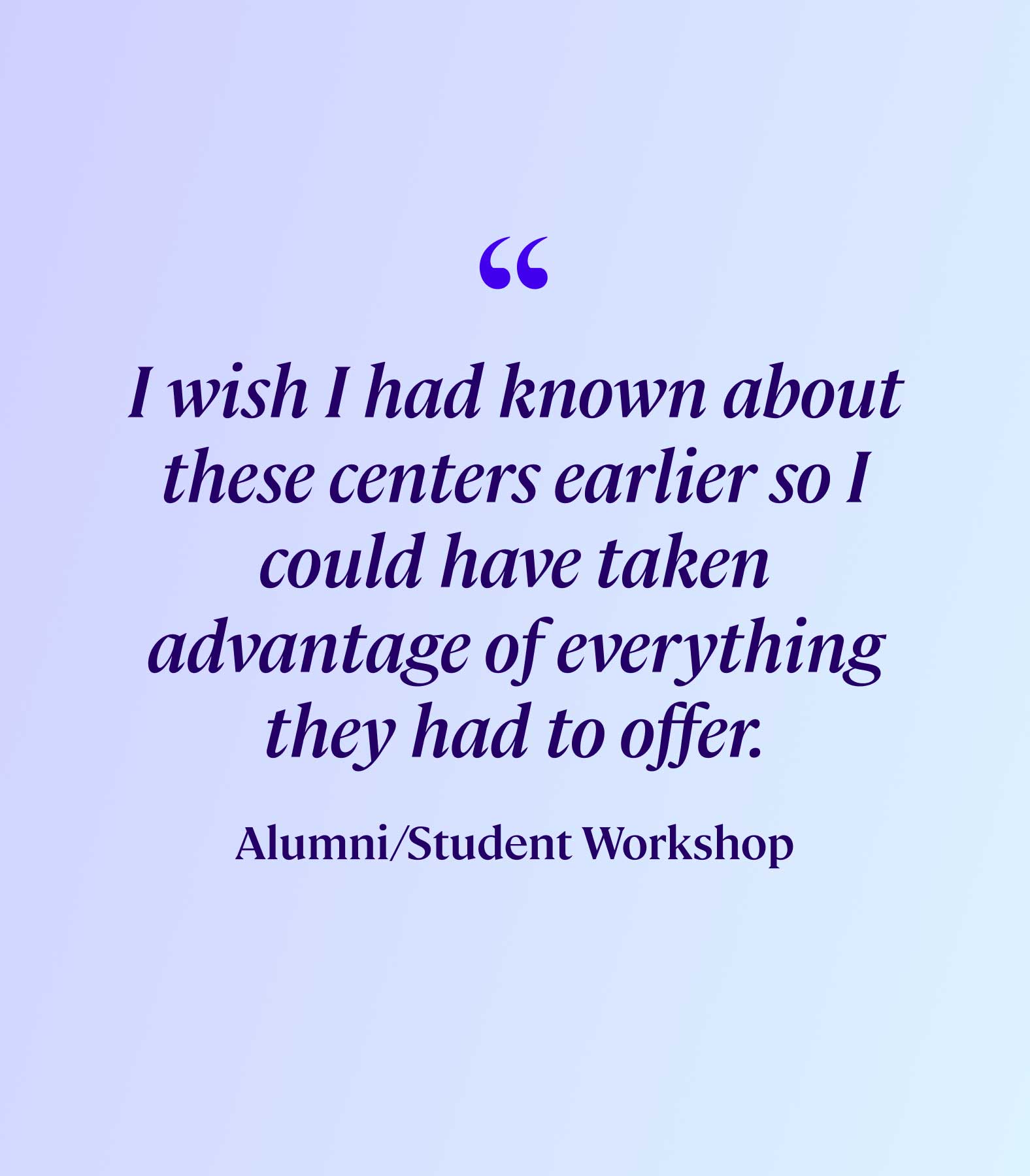
Consolidating a Web of Websites
The College was maintaining separate web entities for a variety of programs and services. Through our research, we found that these separate sites created a siloed user experience. We recommended folding the eight Centers of Excellence into the main domain in order to help promote stronger brand recognition and drive more effective user journeys.

02
Building a Bold New Brand
While The College had an updated strategic plan that resonated within their community, the written and visual expression of the brand had not caught up with that vision. Research showed that audiences perceived the brand as stodgy and closely tied to old B2B and life insurance-centric models. We aimed to redefine this image by repositioning The College as a lifelong applied financial education partner for people from ALL walks of life.
From Boring to Bold
We built a new visual approach that exudes more vibrancy and humanity. The new brand meets The College’s audiences where they’re at in their learning journey. While maintaining a strong sense of professionalism, we intentionally pushed the identity into the nonprofit world and stepped away from the prior rigid institutional approach.


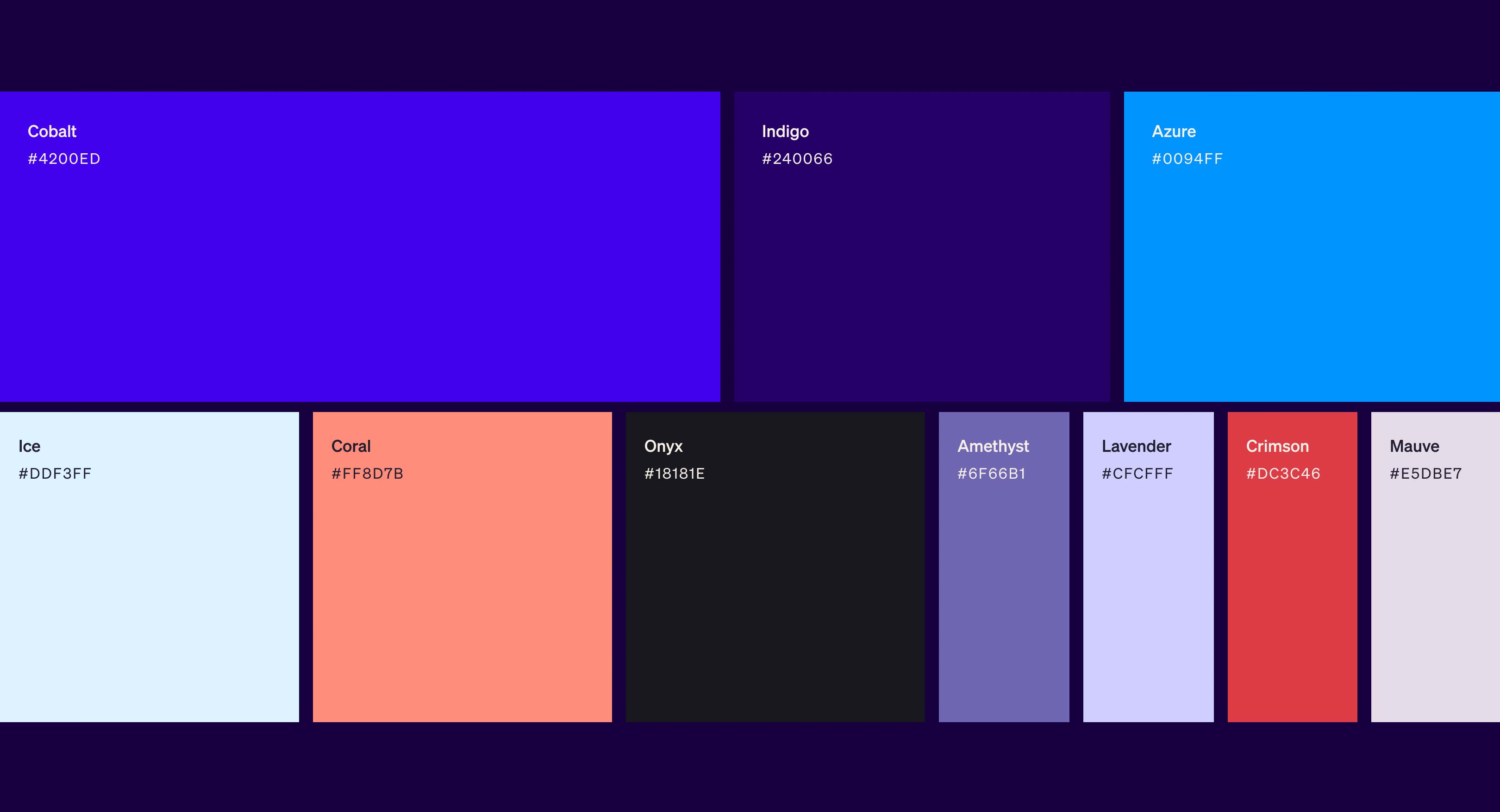
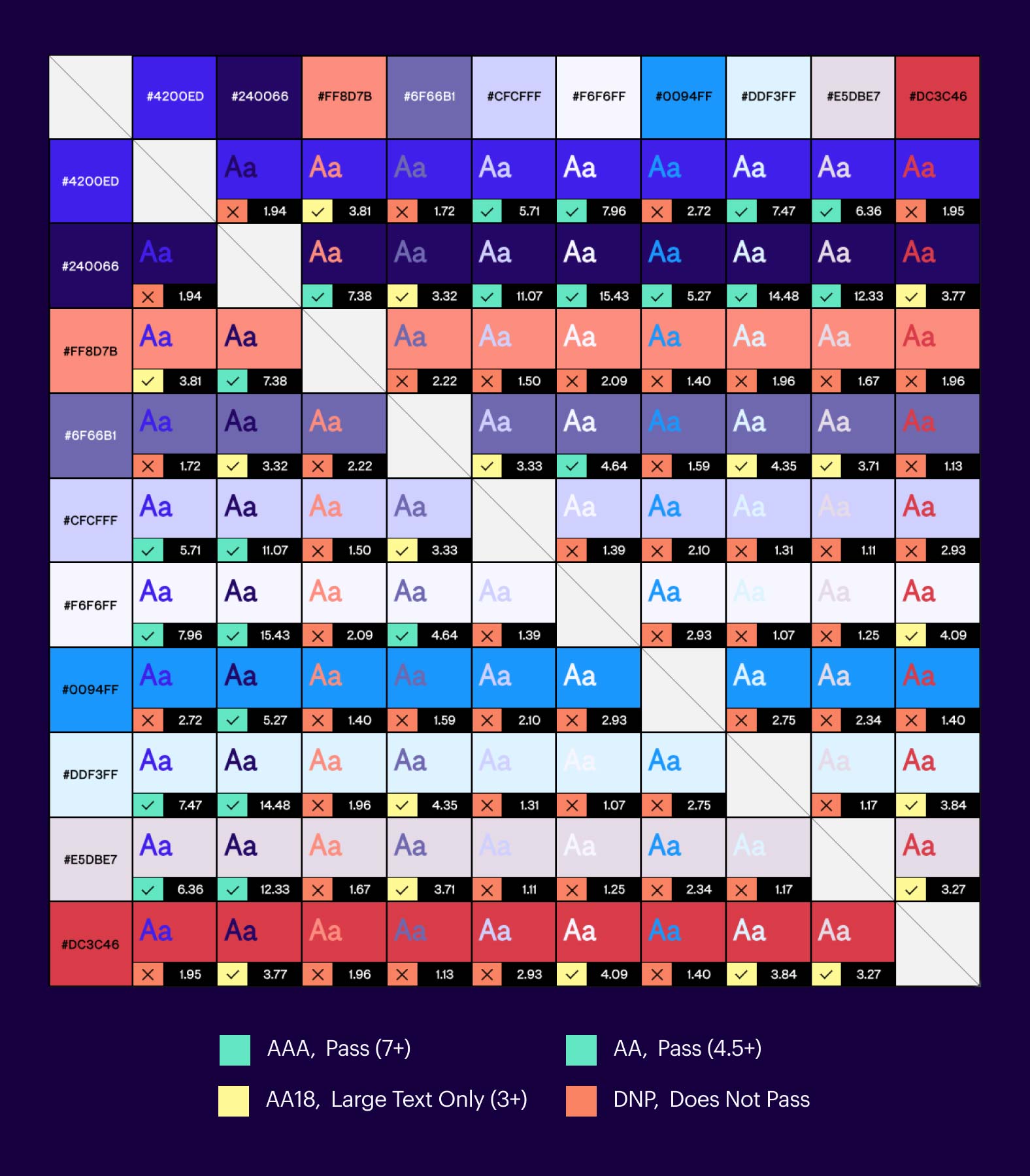
Accessible from the Start
With a people-centric mission and a focus on education, it was critically important that The College have an ADA compliant website. From video captions to fonts and colors, the new site design had compliance in mind as a core value from the start.

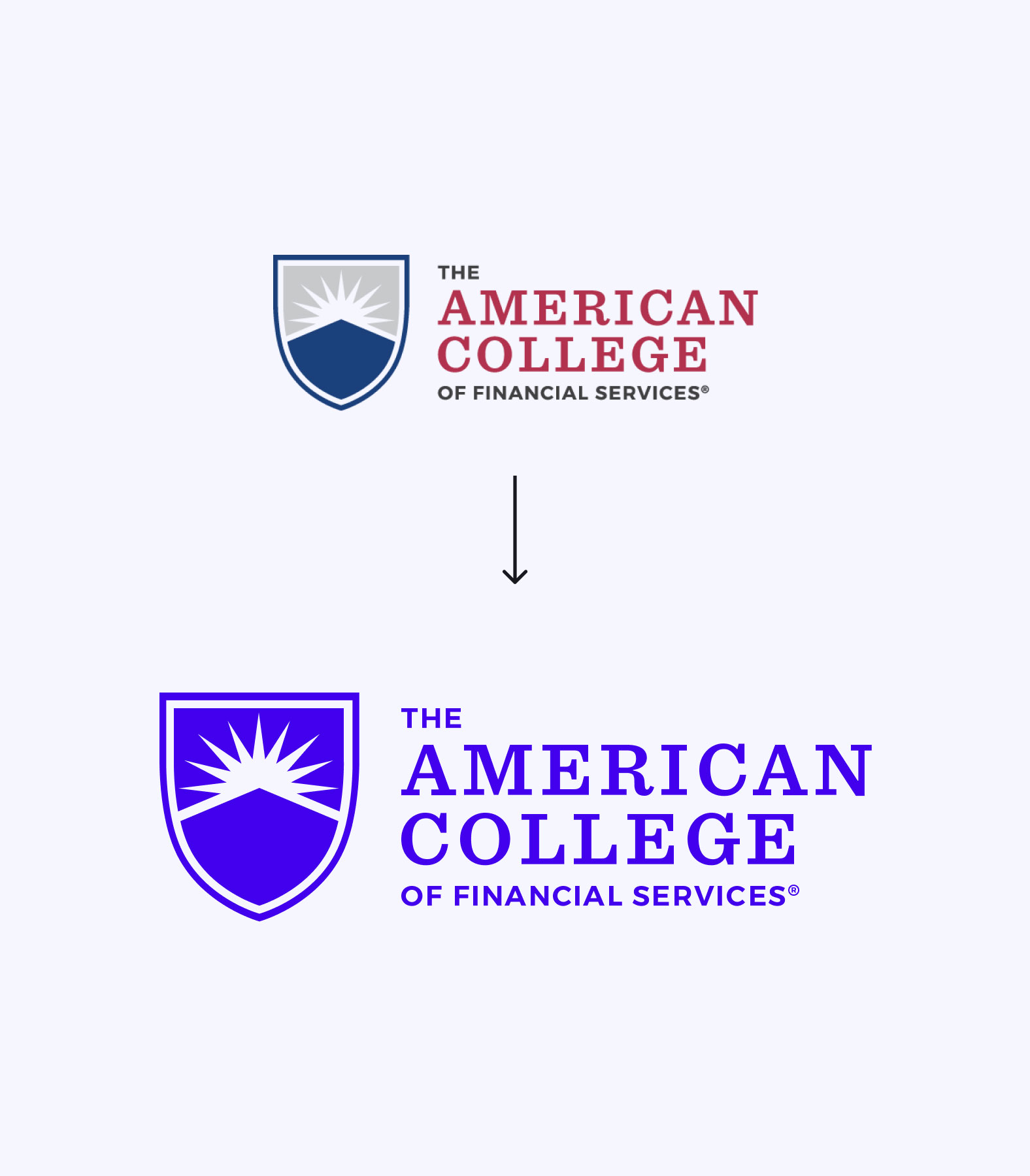

A Modern New Approach
While it was important that the visual identity not stray too far from the legacy of the previous logo, the new direction softened and modernized The College. Monochromatic in its new brand signature blue, the reimagined mark sheds the corporate stiffness and provides a wider appeal and flex in its application.


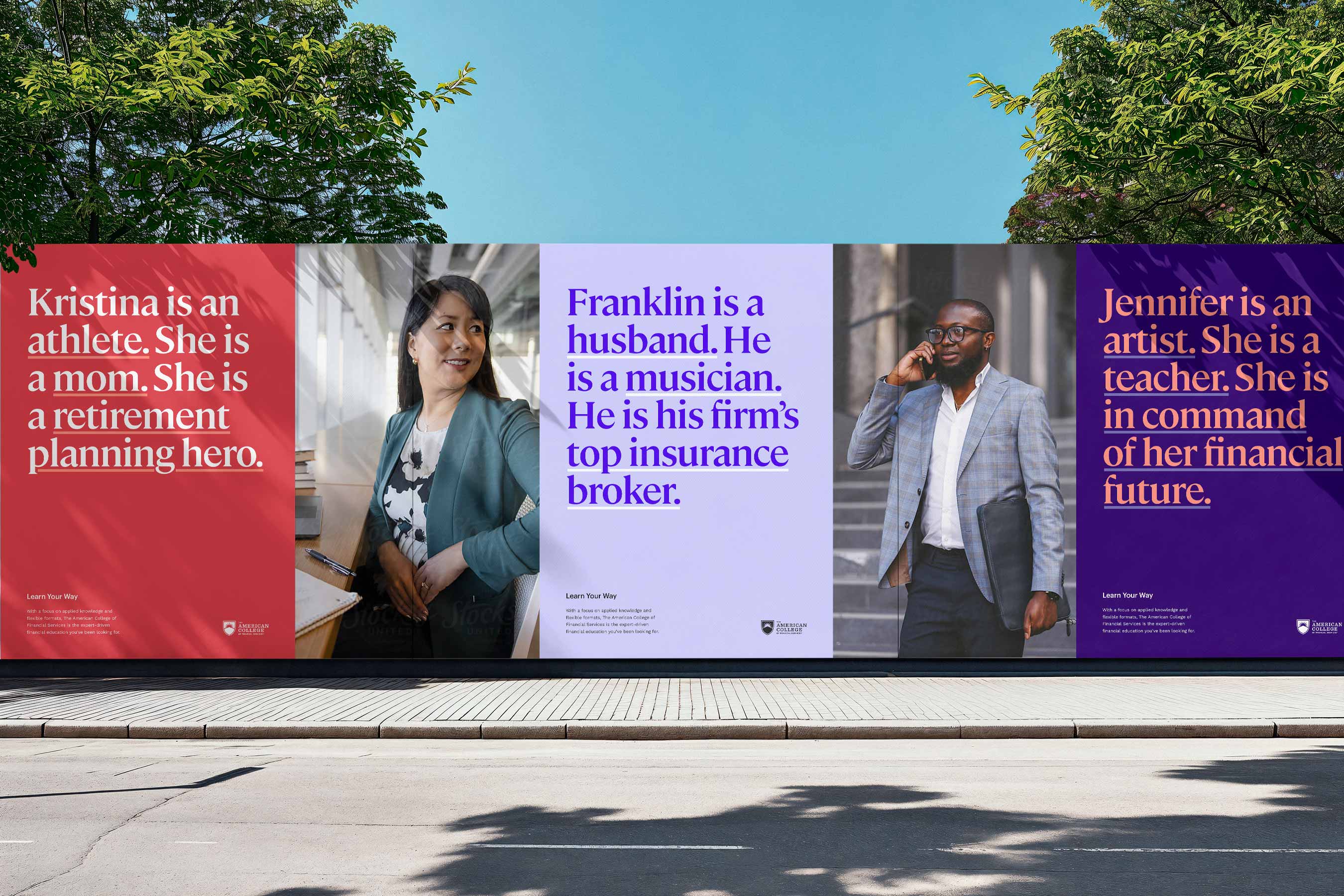
A Consistent Voice
The written expression of the brand required a consistent, unified voice. We created detailed editorial guidelines to establish rules and offer recommendations for writing on behalf of the brand online. The final guide provides clear and practical direction so that all writers for The College can communicate with one consistent voice on the web.
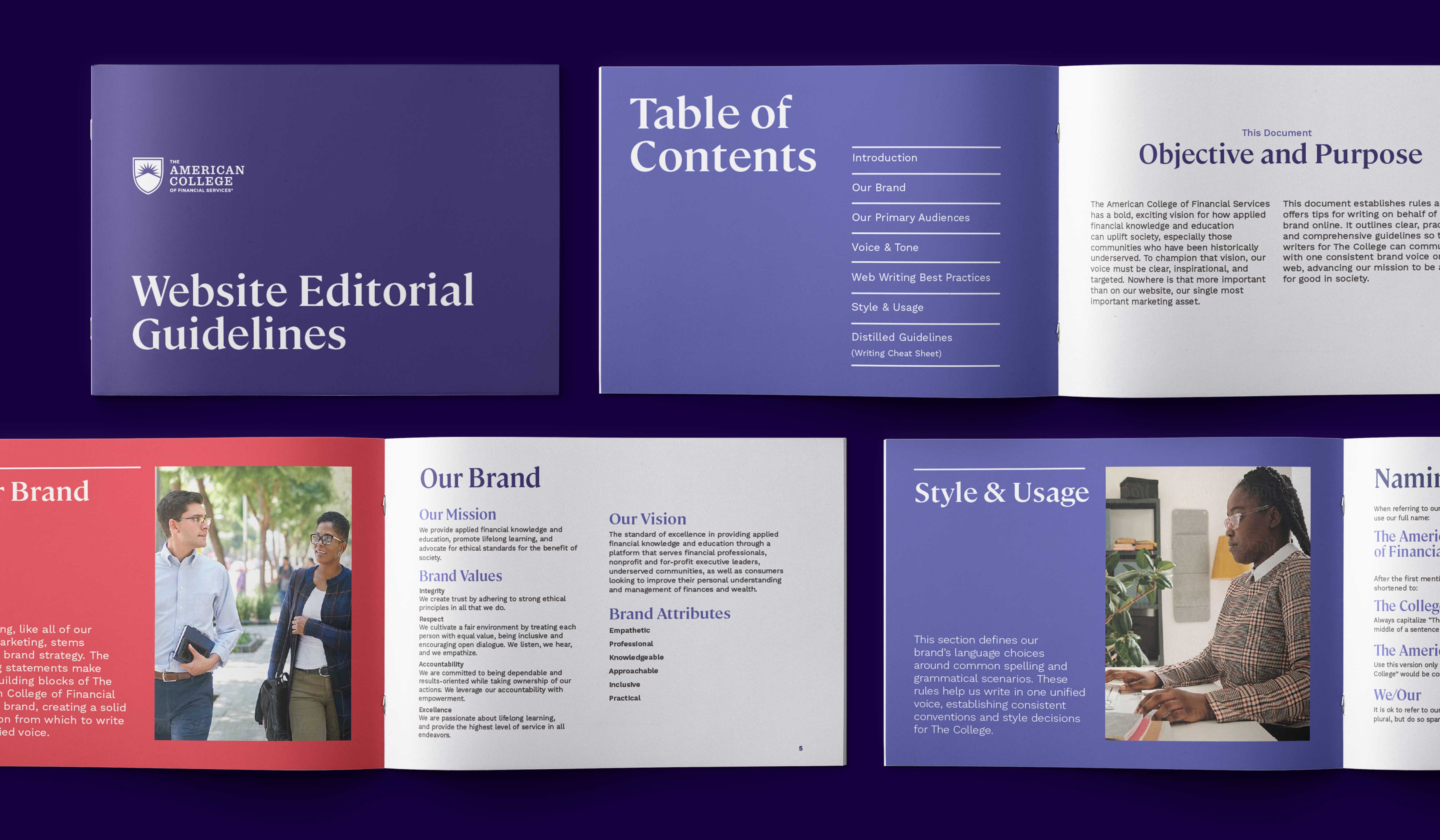
03
A Customized Web Experience
With a solid brand foundation in place, we revamped the website to strategically prioritize personalization. Through a powerful new knowledge hub, users can “choose their own adventure” with curated resources. A tailored quiz generates a learning plan based on the visitor’s professional goals to further enhance the personalized journey. With dynamic animation, user-friendly program information, and seamless storytelling features the result is a compelling new online home for The College.
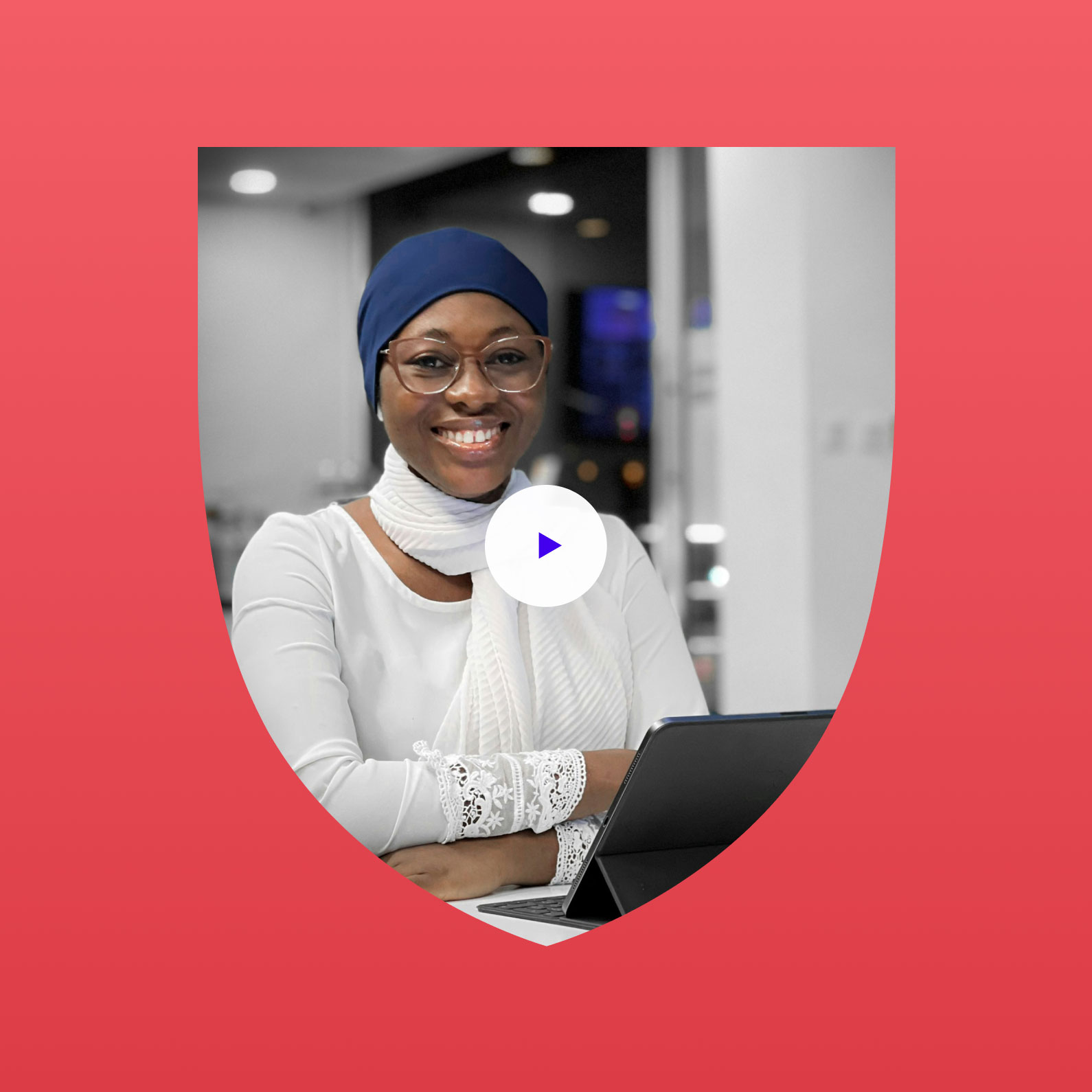
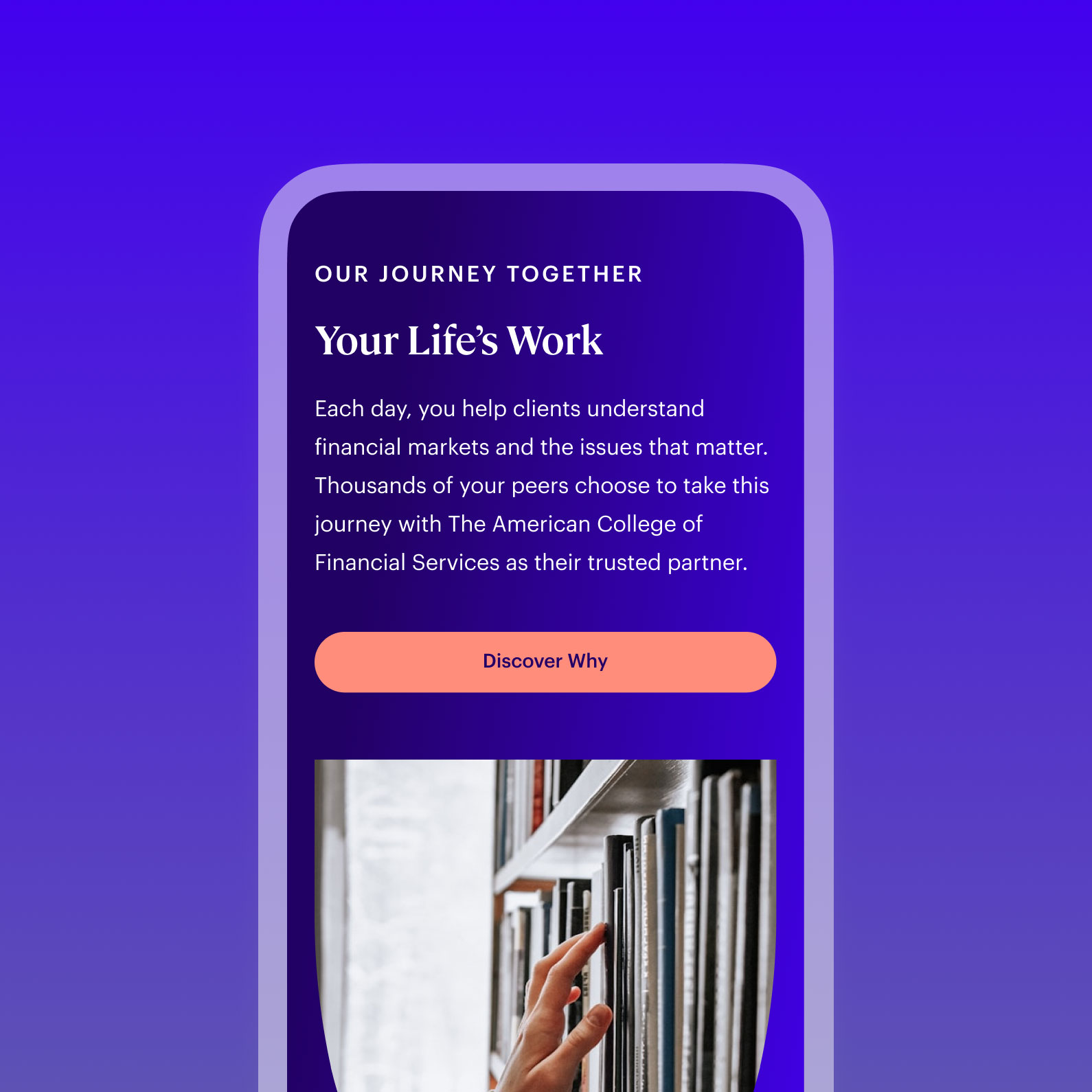
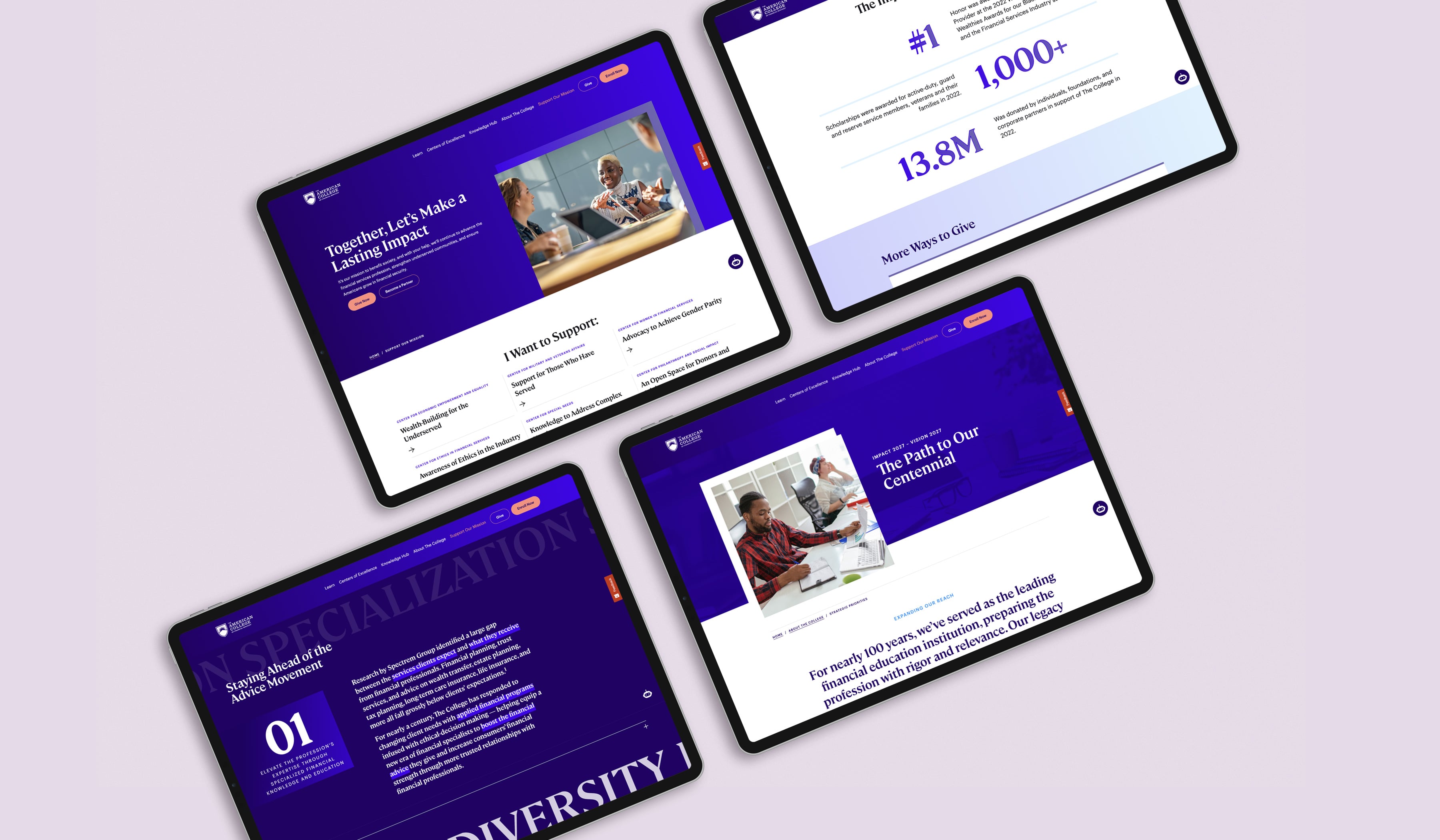
Guiding the Visitor
Smooth scrolling motion effects entice visitors to discover more of the College’s rich content.
Telling a Strong Story
With scrolling overlays, clean collapsing footnotes, and color filling graphics, the design team at Push10 found multiple ways to bring The College Strategic Priorities to life.
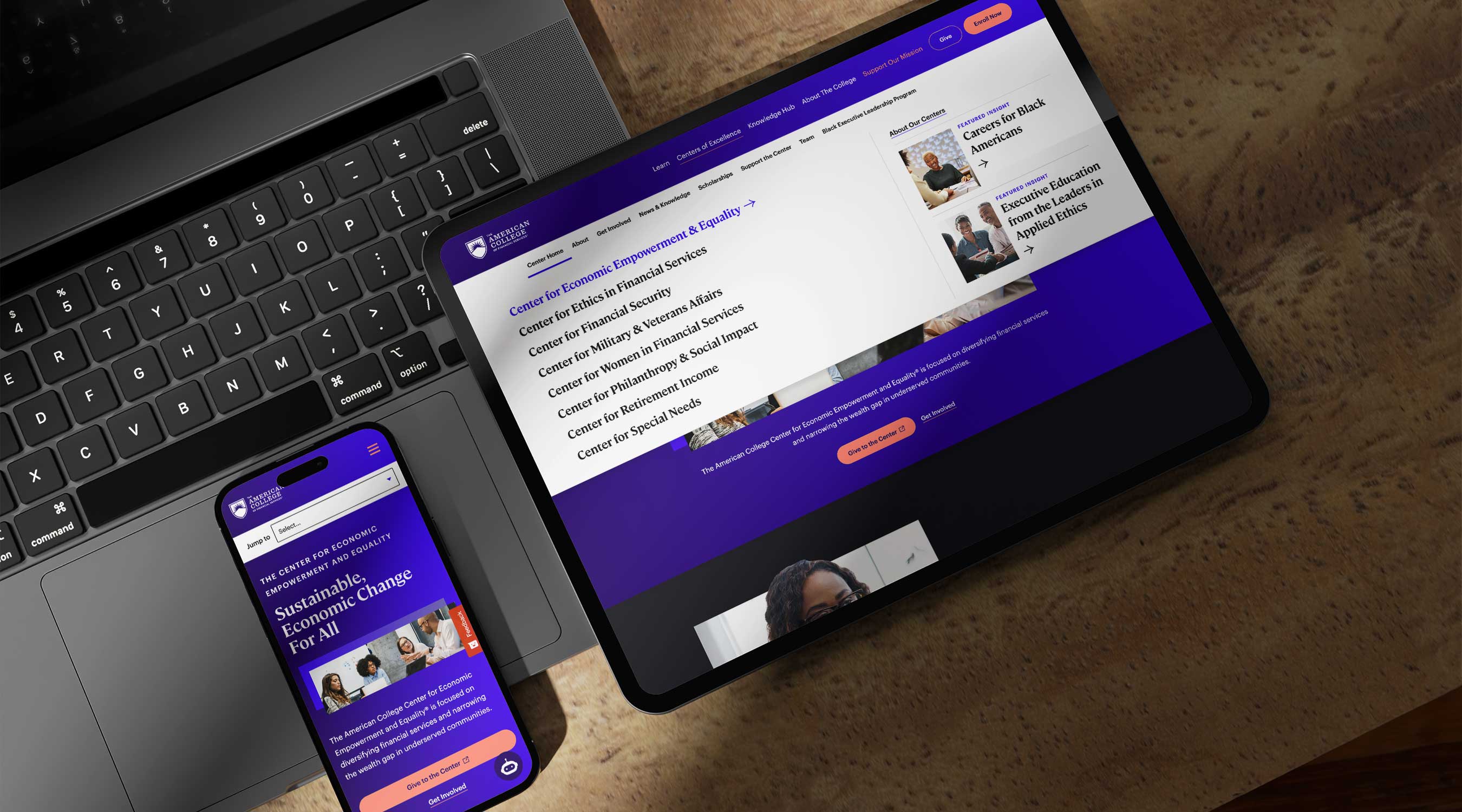
Program Pages that Convert
We restructured the Programs section of the site to allow prospective students to quickly and easily find comprehensive course information and answers to their most common questions. Robust filtering makes it easy to find relevant courses. Then within each course page, an instant breakdown of immediately relevant information like course timing, delivery format, and tuition address the most common student questions while testimonials validate the ROI with social proof.
04
Optimizing the Enrollment Experience
The College’s data showed that 93% of students did not complete enrollment. We surveyed prospective and current students and collaborated with our platform experts, Engine Room, to determine what factors were most at fault. Together, we launched a comprehensive new enrollment experience that’s resulted in a +57% enrollment increase over the previous year.
A Decrease in Drop-offs
With a strong foundation of student insights, we designed a new intuitive interface that features better information hierarchy, reduces the support required from internal staff, and ultimately allows students to be more self-sufficient during the enrollment process. Together, these improvements decrease drop-offs and result in more students for The College.
05
A Hub Designed with Students in Mind
The College’s student portal, or “Learning Hub,” is a centralized tool where students can manage their class enrollment, save resources, download course history and transcripts, get messages from The College, and manage recertification and continuing education credits. Students reported that the portal was difficult to navigate and confusing. Too often, they preferred to call Student Affairs rather than struggle with the portal.
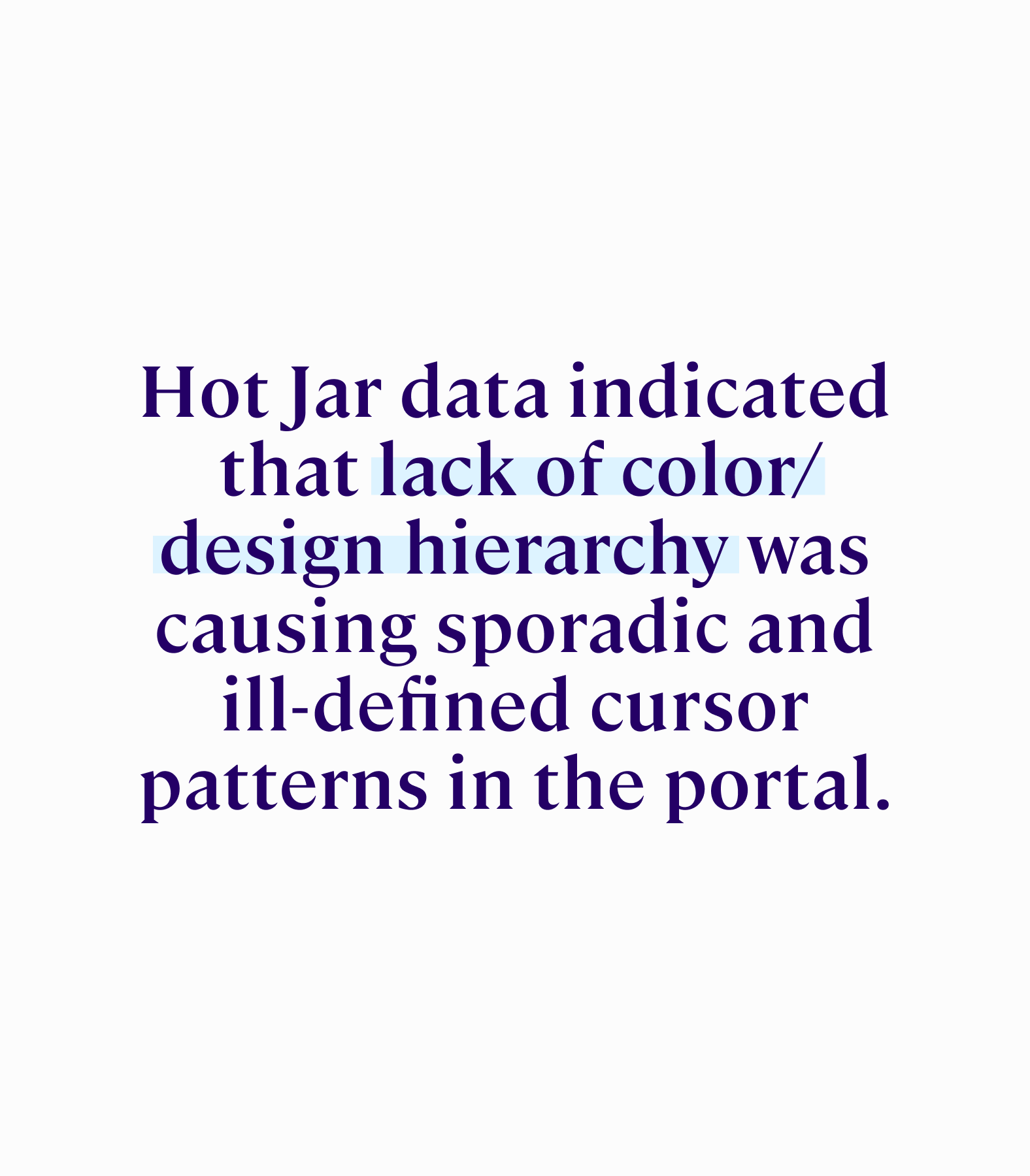
A New Student Experience
To better serve current students, we gave the student portal a design and UX facelift that better uses design hierarchy and smart UI elements to instruct the visitor’s attention. We created a bolder “dashboard” view, more prominent notification system, and an “up next” view among other structural improvements – all with the aim of reducing student frustration and relieving support staff.

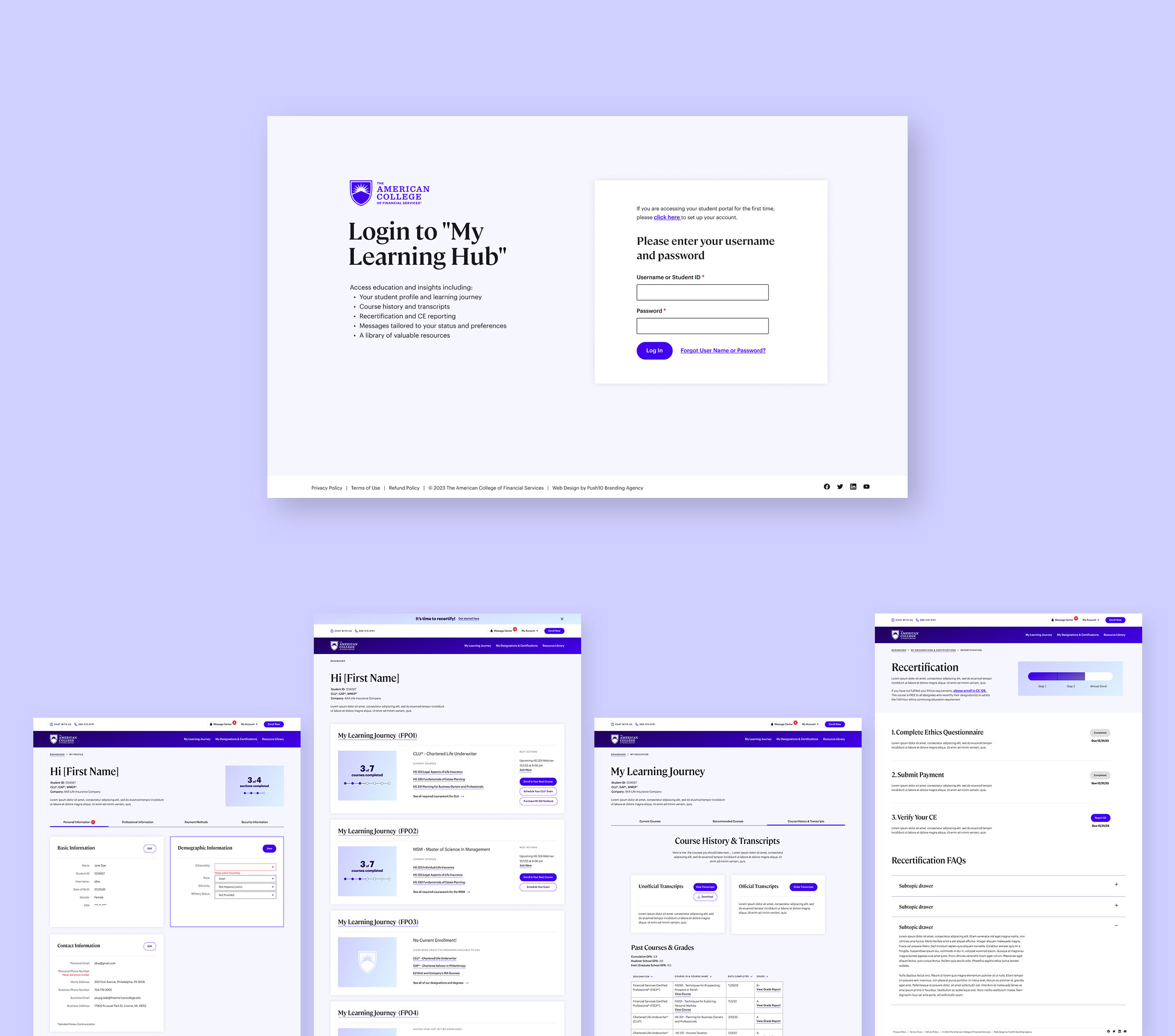
06
Results Right Away
Upon launch, the new web experience drew rave reviews from the College and its internal teams. But the true test was how it performed with the public. Straight away, results began to emerge showing the positive impact of the new design.
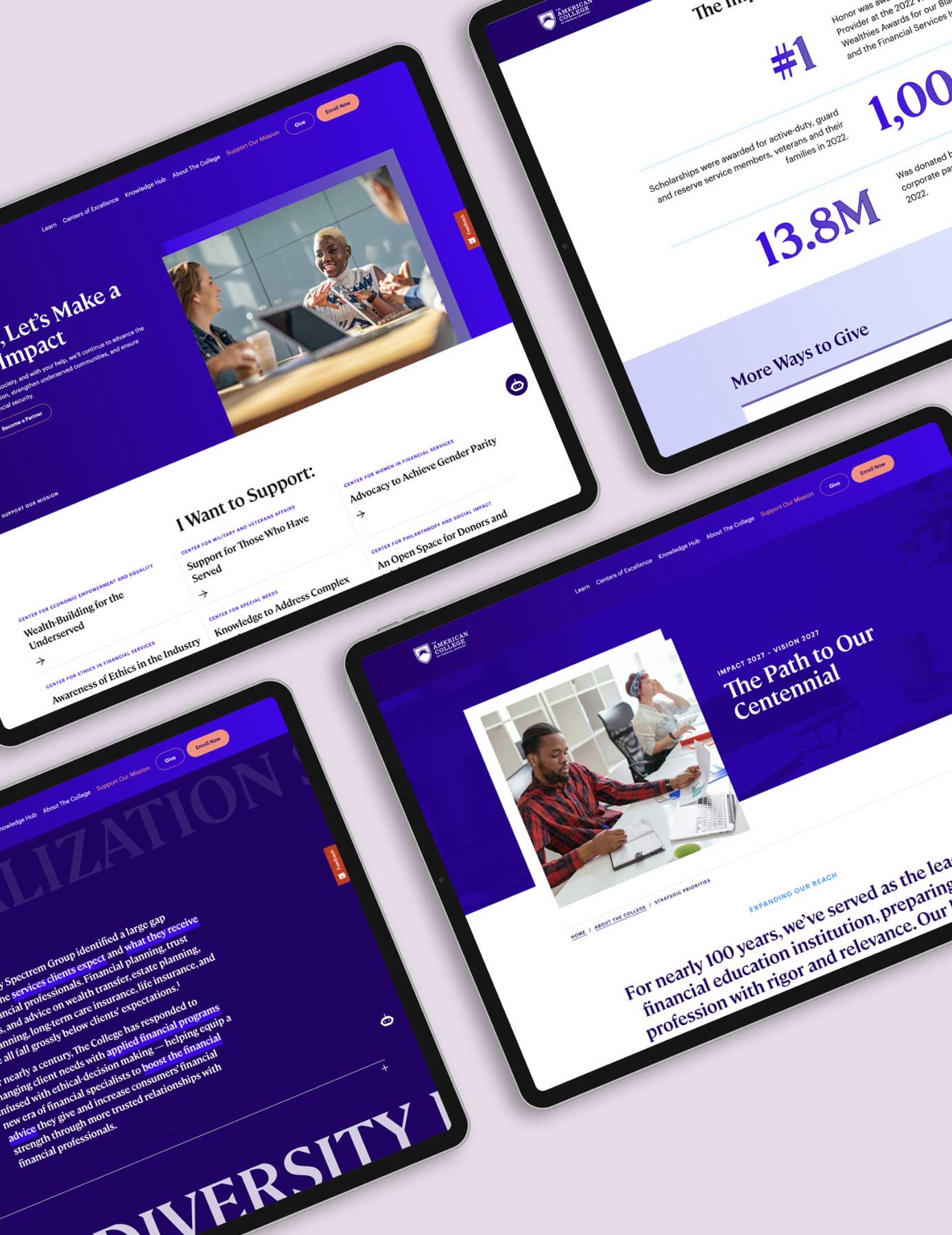

28%
Increase in views by user
37%
increase in average engagement time
57%
increase in enrollment over the prior year
Push10 took the time to understand The College, embody our brand and infuse it with fresh thinking and their expertise, and strategically and creatively deliver on a storytelling pillar that brings our 2027 vision to life.
The American College of Financial Services
Jared Trexler, CMO
VISIT THE WEBSITEView Related Work
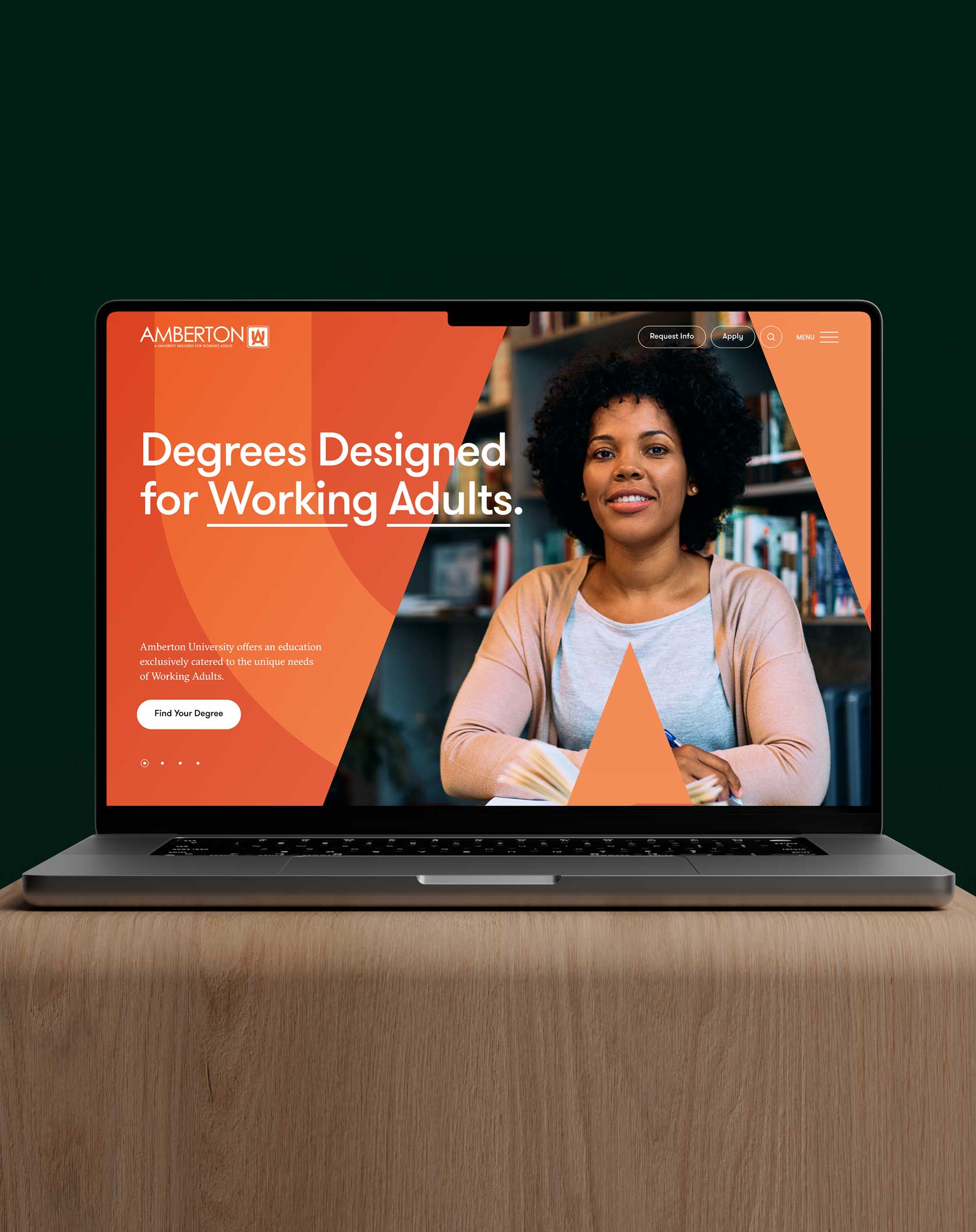
Amberton University
We worked with Amberton to refine their messaging, refresh their brand, and reimagine their website to reach more adult learners.
